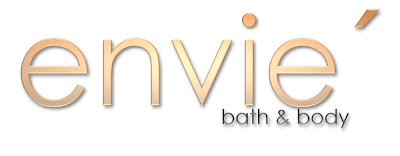Now that we've discussed factors that cause acne, we can explore the treatments. The two most common acne treatments are benzoyl peroxide and salicylic acid.
Benzoyl peroxide works by killing the bacteria that causes acne. This bacteria (Propionibacteria acne)cannot live in an oxygen rich environment. The structure of benzoyl peroxide actually contains 4 Oxygen atoms per molecule (that's a lot). In essence this ingredient floods the pores with oxygen thereby killing the acne causing bacteria. Benzoyl peroxide also works to keep the pores clear of dead skin cells. Thus, not only does it treat acne, but it helps to prevent future breakouts. This treatment is most effective on mild to moderate acne and can be used with other acne treatments. Because there is no real cure for acne, treatment must be ongoing to ensure clear skin. Benzoyl peroxide is overwhelmingly popular in part because there are no known side effects that come with prolonged use.
Benzoyl peroxide is available in many forms including liquid, cream and bar cleansers, toner, concentrated cream, shaving cream, gel etc. The general consensus is to start treatments in a concentration of 2.5% for at least three weeks and track the results. Benzoyl peroxide is available in stronger concentrations, however, they are a lot more irritating to the skin so the side effects may outweigh the benefits in some situations. The goal is to use the lowest and most effective concentration possible. It is important to note benzoyl peroxide is not to be used as a spot treatment. This ingredient is known to be drying, so it is important to use a good non-comedogenic (doesn't clog pores) moisturizer. Also, peroxides are bleaching agents so avoid getting them in your hair, or on clothes and towels.
Unlike benzoyl peroxide, salicylic acid does not treat acne bacteria. It is used to treat acne caused by clogged pores that appear in the form of white and blackheads. Salicylic acid is a beta hydroxy acid that sloughs away dead skin cells that could possibly clog the pores. It is able to penetrate the pores keeping them clear and preventing future breakouts.
Salicylic acid is available over the counter in lotion, cream, cleanser, toner, and pre-soaked application pads. Most treatment concentrations range from 0.5% to 2%. Proper use of salicylic acid as an acne treatment would be to start with either the application pads or lotion/cream to get acne under control. Once your skin has cleared it is safe to graduate to a once a week wash or scrub. The use of more than one form of the treatment is highly discouraged as salicylic acid can be very drying and irritating. Similar to benzoyl peroxide, salicylic acid treatments must be ongoing to continue to see positive results. Possible side effects are stinging, burning and excessive dryness. As always be sure to use a good moisturizer.
In the next post of this series will discuss a few less common acne treatments, spot acne treatments and Accutane by request. Until then...
[ ... ]
Benzoyl peroxide works by killing the bacteria that causes acne. This bacteria (Propionibacteria acne)cannot live in an oxygen rich environment. The structure of benzoyl peroxide actually contains 4 Oxygen atoms per molecule (that's a lot). In essence this ingredient floods the pores with oxygen thereby killing the acne causing bacteria. Benzoyl peroxide also works to keep the pores clear of dead skin cells. Thus, not only does it treat acne, but it helps to prevent future breakouts. This treatment is most effective on mild to moderate acne and can be used with other acne treatments. Because there is no real cure for acne, treatment must be ongoing to ensure clear skin. Benzoyl peroxide is overwhelmingly popular in part because there are no known side effects that come with prolonged use.
Benzoyl peroxide is available in many forms including liquid, cream and bar cleansers, toner, concentrated cream, shaving cream, gel etc. The general consensus is to start treatments in a concentration of 2.5% for at least three weeks and track the results. Benzoyl peroxide is available in stronger concentrations, however, they are a lot more irritating to the skin so the side effects may outweigh the benefits in some situations. The goal is to use the lowest and most effective concentration possible. It is important to note benzoyl peroxide is not to be used as a spot treatment. This ingredient is known to be drying, so it is important to use a good non-comedogenic (doesn't clog pores) moisturizer. Also, peroxides are bleaching agents so avoid getting them in your hair, or on clothes and towels.
Unlike benzoyl peroxide, salicylic acid does not treat acne bacteria. It is used to treat acne caused by clogged pores that appear in the form of white and blackheads. Salicylic acid is a beta hydroxy acid that sloughs away dead skin cells that could possibly clog the pores. It is able to penetrate the pores keeping them clear and preventing future breakouts.
Salicylic acid is available over the counter in lotion, cream, cleanser, toner, and pre-soaked application pads. Most treatment concentrations range from 0.5% to 2%. Proper use of salicylic acid as an acne treatment would be to start with either the application pads or lotion/cream to get acne under control. Once your skin has cleared it is safe to graduate to a once a week wash or scrub. The use of more than one form of the treatment is highly discouraged as salicylic acid can be very drying and irritating. Similar to benzoyl peroxide, salicylic acid treatments must be ongoing to continue to see positive results. Possible side effects are stinging, burning and excessive dryness. As always be sure to use a good moisturizer.
In the next post of this series will discuss a few less common acne treatments, spot acne treatments and Accutane by request. Until then...




